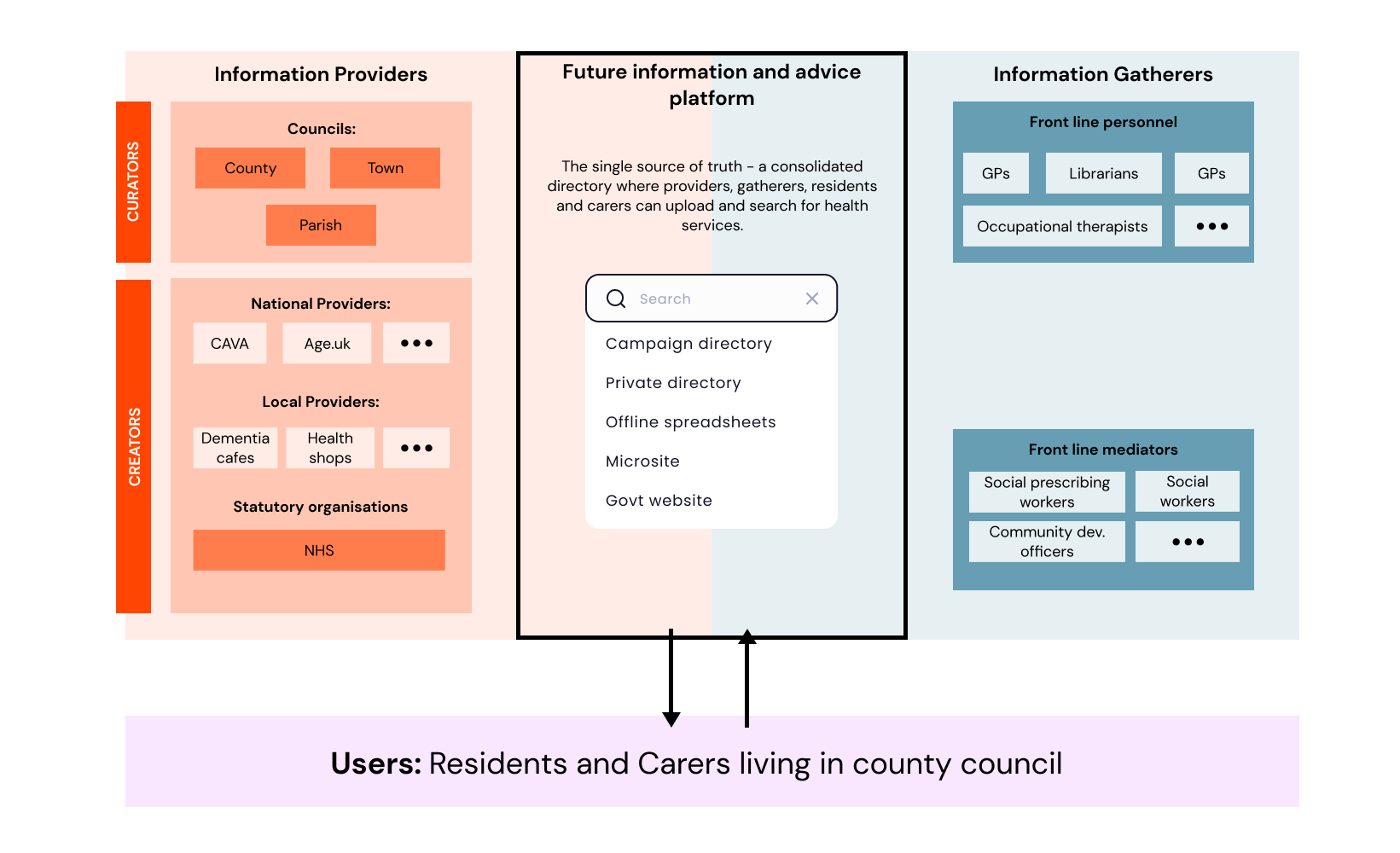Health & Wellbeing - UK County Council
The challenge
Accessing non-emergency health services online is difficult, especially since personal health issues are often complex and difficult to articulate. Residents seeking help in the UK thus rely heavily on telephone calls or in-person visits to the local county council, which in turn put strain on already limited resources.
Our vision is empowering residents to take their non-emergency health needs into their own hands, whilst empowering government officials and third-party services to reach residents effectively.


To begin solving this problem, we used the council's current directory of services (a simple albeit dated solution) as a base to create a new platform that would not only list out available services, but also anticipate residents' needs and match them to a wide range of services.
Our ultimate challenge was to help people to help themselves.
What I did
My work focused on Discovery Research - qualitative and quantitative methods to answer who, how and what questions.
- Literature review
- Desk research
- Online surveys with residents
- Phone interviews with residents
Consolidate existing information. Understand the problem space, Low cost of interfacing directly with users
- 12 stakeholder workshops
- Co-creation session
- Presentation of results
Deeply understand the complex workflow of multiple government agencies and healthcare systems. Encourage buy-in from various stakeholders and understand what success means to them
The process

- Who will be looking for health and wellbeing information online?
- How will they typically find it?
- What would make the platform a success?
- What types of content and features should be included?
- How would users prefer to navigate and access the platform?
- 1-1 usability testing with residents and stakeholders
- Iterate design based on results
Discovery insights
After talking to various groups of users in 12 stakeholder workshops, I had a good idea of the complexities, but needed other people to understand the big picture as well. I needed to visualise it. I mapped out the entire workflow of multiple stakeholders. Exposing the complex landscape was a critical step in understand how information flows and thus how we could streamline the process.

It was clear from the diagram that important information was getting lost in the sea of platforms, and also outdated offline spreadsheets. Our solution needed to serve as a central transition unit for both online and offline information held by individuals and corporations.
I envisioned an alternative future where information flows like this:

As a team we then collated and presented our findings in the form of user needs.
USER NEED 01
Knowing when I'm at risk
USER NEED 02
A comprehensive, accurate resource
USER NEED 03
Accessible to people with vulnerabilities
Prototype
As the project was put on hold due to Covid restrictions, I designed an interactive prototype independently to visualise the results of our research. Although this was not used for testing with actual users, it provided much needed context to the flow of our most important user journeys.
.png)